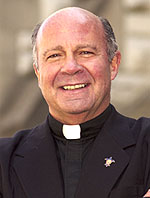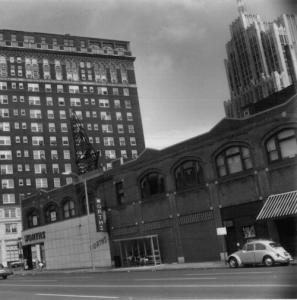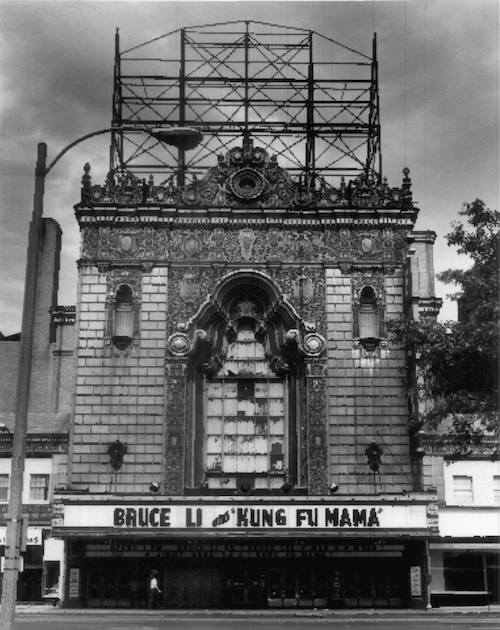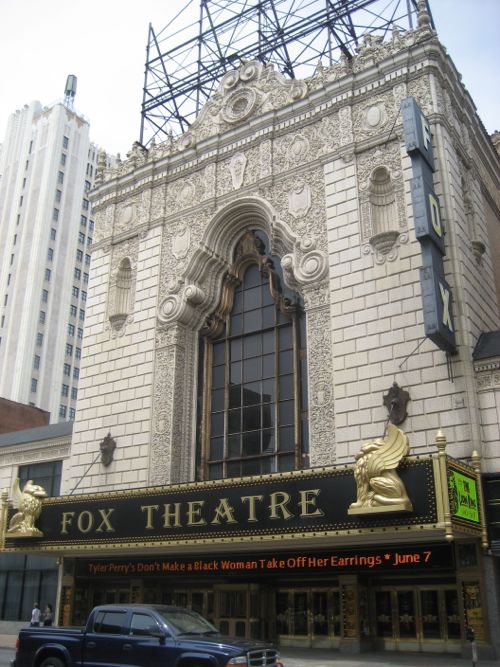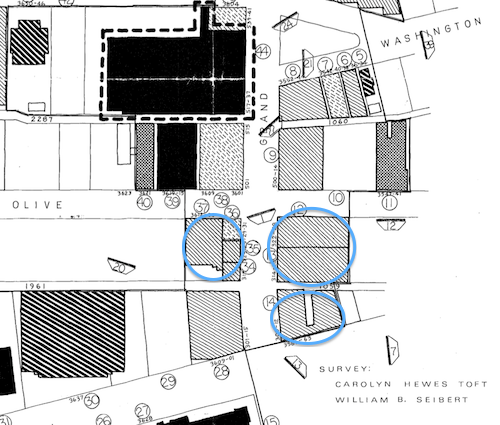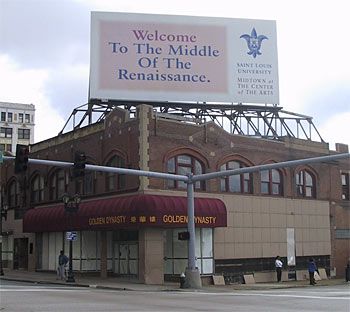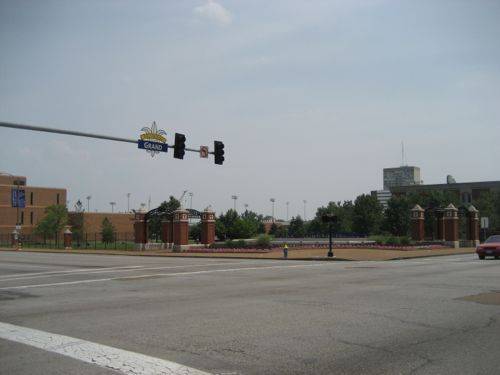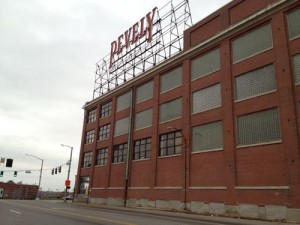SLU’s Sculpture Garden Not Accessible To All
The northeast corner of Grand & Lindell, once an urban corner, is Saint Louis University’s Ellen Clark Sculpture Park. This large open site contains a number of sculptures that apparently please SLU President Lawrence Biondi.
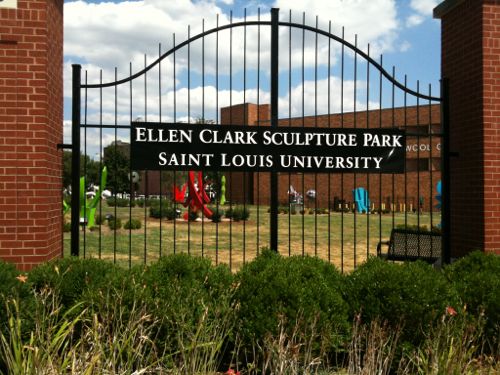
I’ve only seen the colorful sculptures from the public sidewalk surrounding the fenced space. It is open to the public but the design isn’t accessible to those of us using wheelchairs.
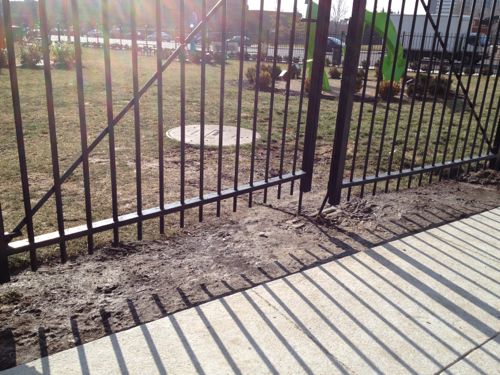
I can walk with my cane if there was a way to get my chair inside the gates so I don’t have to leave it out on the sidewalk to risk being stolen. I’d think this sculpture garden should comply with the ADA due to #9 below:
Under the ADA public accommodations are private entities that own, lease, lease to or operate a place of public accommodation. This means that both a landlord who leases space in a building to a tenant and the tenant who operates a place of public accommodation have responsibilities to remove barriers.
A place of public accommodation is a facility whose operations affect commerce and fall within at least one of the following 12 categories:
- Places of lodging (e.g., inns, hotels, motels, except for owner-occupied establishments renting fewer than six rooms)
- Establishments serving food or drink (e.g. , restaurants and bars)
- Places of exhibition or entertainment (e.g. , motion picture houses, theaters, concert halls, stadiums)
- Places of public gathering (e.g. , auditoriums, convention centers, lecture halls)
- Sales or rental establishments (e.g. , bakeries, grocery stores, hardware stores, shopping centers)
- Service establishments (e.g. , laundromats, dry-cleaners, banks, barber shops, beauty shops, travel services, shoe repair services, funeral parlors, gas stations, offices of accountants or lawyers, pharmacies, insurance offices, professional offices of health care providers, hospitals)
- Public transportation terminals, depots, or stations (not including facilities relating to air transportation)
- Places of public display or collection (e.g. , museums, libraries, galleries)
- Places of recreation (e.g. , parks, zoos, amusement parks)
- Places of education (e.g. , nursery schools, elementary, secondary, undergraduate, or postgraduate private schools)
- Social service center establishments (e.g. , day care centers, senior citizen centers, homeless shelters, food banks, adoption agencies)
- Places of exercise or recreation (e.g. , gymnasiums, health spas, bowling alleys, golf courses) (source)
b
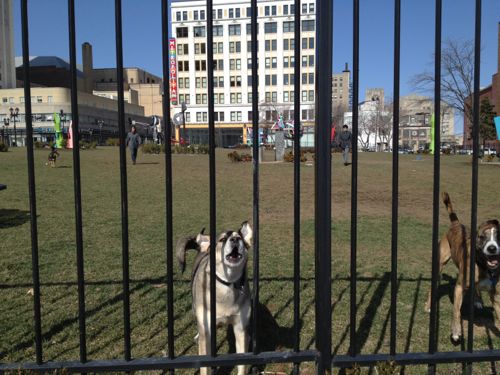
SLU installed a bag dispenser so dog owners can clean up and Biondi likes seeing dogs there.
“I am a dog lover,” said Biondi, who has an 8-year-old golden retriever named Iggy, in honor of St. Ignatius, founder of the Jesuit order. “But even if I didn’t love dogs, I’d still want the dogs in the park. It’s a nice opportunity for the community to get together and come to the campus and form friendships.” (stltoday.com)
Even as a dog park it has issues. If I were to try to enter the park there’s a risk someone’s dog might escape since no vestibule is provided.
Officially the entire corner is temporary, the university sought development proposals when the recession hit. Rather than make the park accessible I’d much prefer to see it get redeveloped. SLU has tons of open land, plenty of space exists to create another dog park nearby.
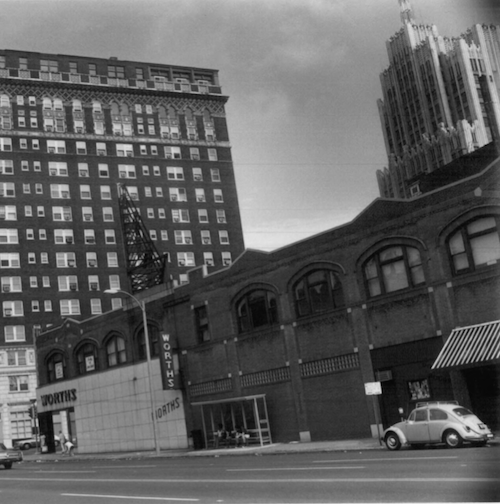
The historic Marina Building was only two stories high but a new building could be many more floors given the height of others in the area. I’d love to see a Trader Joe’s in the ground floor of a new building.
Here’s an interesting tidbit I ran across researching this post:
This year [2011] marks the sesquicentennial of the Camp Jackson massacre at this site, then known as Lindell Grove on the western edge of the city. On May 10, 1861, federal troops — already on edge and spooked by the sound of gunfire — fired into the crowd, killing 28 civilians, including several children, and wounding nearly 100 more. From 1929 to 1959 a monument to the event stood nearby, but it was banished when a descendant of Daniel M. Frost, general of the pro-Confederate Missouri militia, donated funds for Saint Louis University to purchase the midtown Frost Campus. Today, the site houses the Ellen Clark Sculpture Park, which is full of colorful abstractions reflective of Saint Louis University president Lawrence Biondi’s taste in art. Not even a small plaque commemorates the historic event or the two dozen-plus civilians who died here. (RFT Best Hidden Historical Site – 2011)
– Steve Patterson
